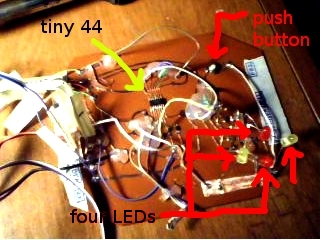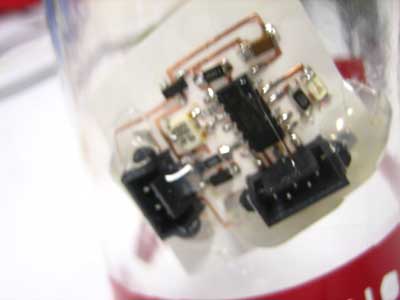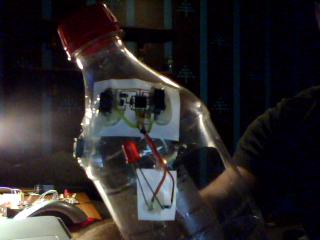 stuffed tiny 44 flex circuit
stuffed tiny 44 flex circuit
this is an image of the stuffed board. I added jumpers to connect things quickly a well as make certian parts modular, so I would not have to remake them each time I wanted to change the design of the board.
This board works.
the next step was to create my interactive game
the game works by flashing one of the LEDs a number of times between 1 and 9, and it asks you how many times it blinked. if you type the correct number it tells you you're right and fades the LEDs for you, and if you're wrong it tells you you're wrong. You then press the button to try again.
below are some screenshots of what happens on the computer.
|




